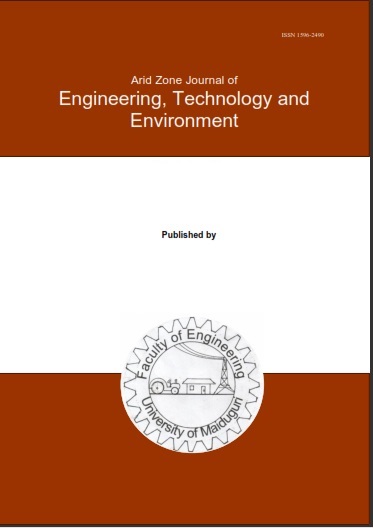Abstract
Urbanization is one of the defining processes of the 21st century, particularly in the rapidly developing country like Nigeria. Google Earth Engine (GEE) and machine Learning techniques were utilized in this study to quantify spatio‐temporal Landuse and Landcover (LULC) dynamics for 2000, 2010, 2020, and 2025 and to forecast the future trends to 2035 in Maiduguri Metropolis. A decadal classification framework was adopted to facilitate long-term LULC analysis, while the inclusion of 2025 enables the capture of emergent post-conflict land transformations and the spatial impacts of the 2024 flood event, which significantly altered land cover configurations. The projection to 2035 maintains a 10-year forecasting interval, ensuring consistency with established temporal benchmarks. Landsat imagery of the selected years was acquired and processed in GEE using the Classification and Regression Tree (CART) algorithm to classify major LULC categories, including built-up areas, cropland, vegetation, wetlands, bare surface, and water body. The overall accuracy for all the assessed years was 80% which indicates high classification reliability. The generated LULC was used to carryout Regression models (linear for five classes and polynomial for cropland) were fitted in Python’s scikit‐learn to project 2035 distributions. The results revealed that built‐up area expanded from 324.8 km² (19.0%) in 2000 to 464.9 km² (27.2%) in 2025, cropland plummeted from 966.9 km² (56.7% ) to 103.6 km² (6.1% ) and bare land surged from 33.6 km² (1.9% ) to 834.1 km² (48.9%). The wetlands and water bodies exhibited fluctuating trends linked to insurgency‐driven land abandonment and the 2024 flood event. Forecasts for 2035 indicate bare land will dominate nearly 72% of the study area, built‐up will reach 517.4 km², and cropland will shrink to 75.3 km². Given these findings, the study strongly recommends integrated sustainable land-use planning and conflict-sensitive restoration strategies to mitigate escalating environmental and socio-economic risks in rapidly urbanizing conflict zones like Maiduguri.

This work is licensed under a Creative Commons Attribution-NonCommercial-NoDerivatives 4.0 International License.
Copyright (c) 2025 ARID ZONE JOURNAL OF ENGINEERING, TECHNOLOGY AND ENVIRONMENT

